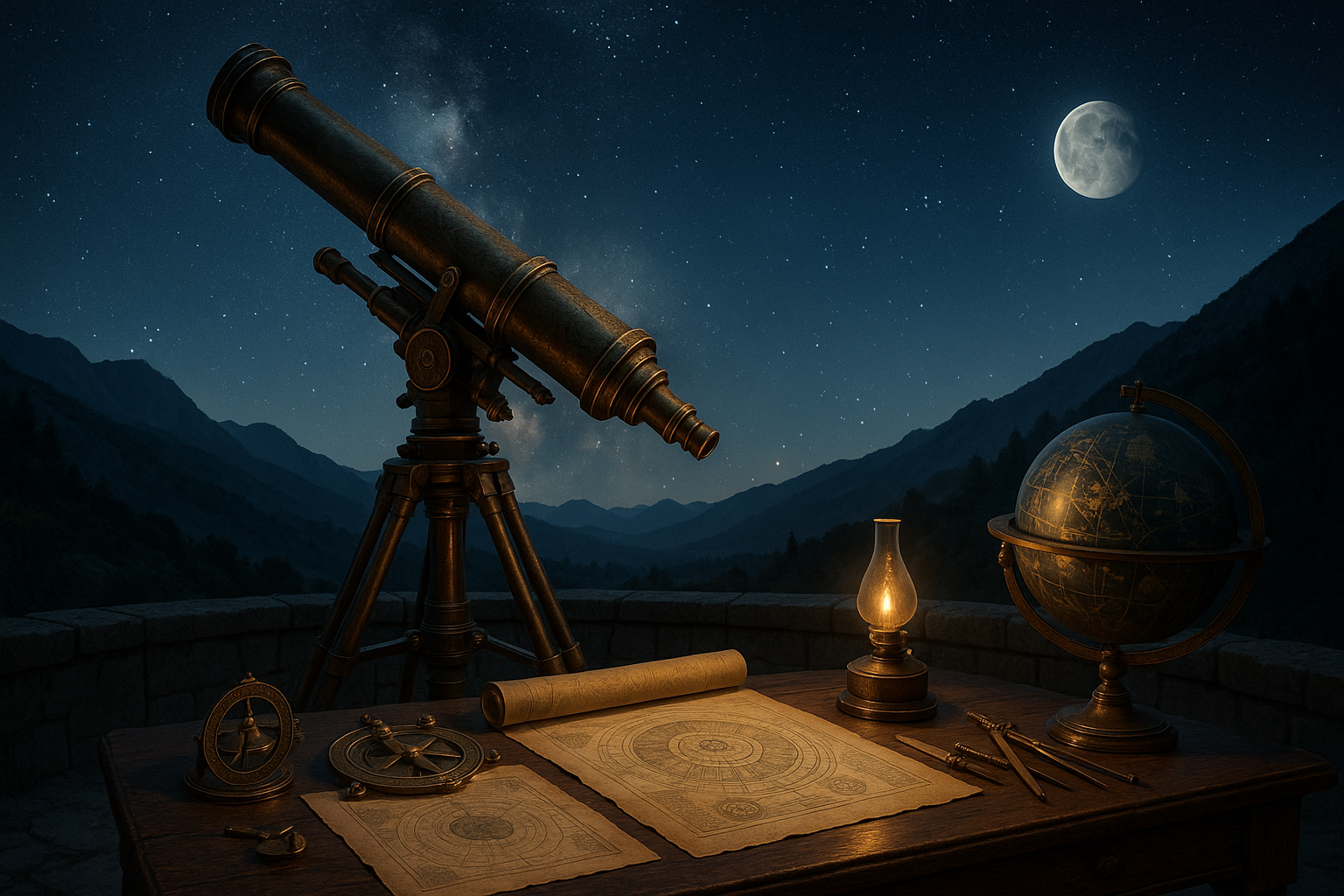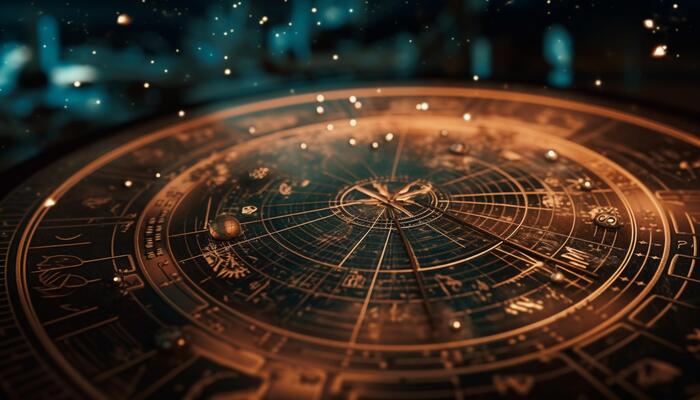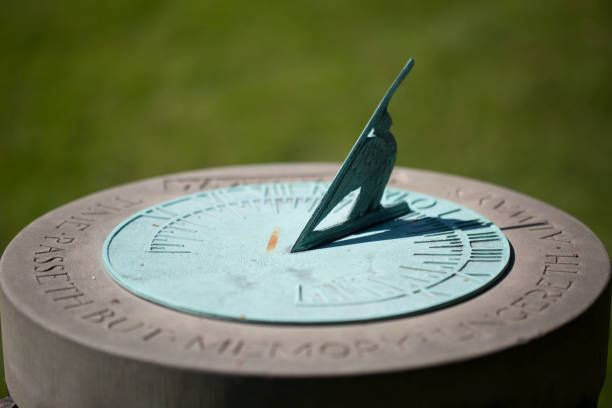In the vast tapestry of human history, few systems have captivated our imagination as profoundly as the calendars that guide our daily lives. Among these, the Hebrew lunisolar calendar stands out not just for its longevity, but for the intricate dance it orchestrates between the sun, moon, and Earth. 🌍 It’s a calendar that does more than just mark the passage of days; it weaves together time, tradition, and celestial rhythms into a harmonious symphony that has been playing for millennia.
But what exactly makes the Hebrew lunisolar calendar so unique? And why has it remained such an enduring fixture in Jewish culture and beyond? To truly appreciate its significance, we need to dive deep into its structure, its historical evolution, and its cultural impact. This journey will reveal a system that is as much about spirituality and identity as it is about astronomy and mathematics.
At its core, the Hebrew calendar is a lunisolar calendar. This means it cleverly combines the cycles of the moon and the sun to maintain alignment with the seasons. Unlike the Gregorian calendar, which most of us use today, and which is purely solar, the Hebrew calendar incorporates both lunar months and solar years. This duality ensures that the major Jewish festivals remain seasonally relevant, as prescribed by ancient religious texts.
The mystery begins with the calculation of the months. Each month in the Hebrew calendar starts with the new moon, making it a lunation. However, because a lunar year (about 354 days) is shorter than a solar year (about 365 days), the calendar needs to make adjustments to stay in sync with the solar cycle. This is where the concept of the leap year enters the picture, adding a 13th month, Adar II, in a complex 19-year Metonic cycle. This balancing act keeps the calendar aligned with the agricultural cycles, ensuring that Passover always falls in spring, and Sukkot in autumn. 🌿
As we explore the Hebrew calendar, we’ll delve into its historical roots and evolution over time. From its biblical origins, where months were observed by the sighting of the moon, to the standardized calculations introduced by Hillel II in the 4th century CE, each stage of its development offers insights into the calendar’s resilience and adaptability. We’ll uncover how it has managed to remain relevant across different epochs and geographies, from ancient Israel to the modern diaspora.
Yet, the Hebrew calendar is more than just a tool for tracking time. It’s a cultural cornerstone, imbued with deep spiritual significance. Each month holds its own meaning and energy, influencing the observance of religious rituals and the rhythm of Jewish life. For example, Tishrei, the seventh month, is a time of introspection and renewal, encompassing major holidays like Rosh Hashanah and Yom Kippur. The calendar also serves as a living link to Jewish heritage, offering a tangible connection to the cycles that guided the lives of ancestors.
Moreover, the Hebrew calendar’s lunisolar nature fosters a unique relationship with nature and the cosmos. It reminds its followers of the celestial dance that governs the world, encouraging a perspective that is both earthly and divine. This cosmic alignment is not just poetic; it is deeply rooted in the agricultural origins of Jewish festivals, which are tied to the harvest and seasonal changes. 🌕
In today’s fast-paced world, where time is often seen as a commodity, the Hebrew lunisolar calendar offers a refreshing perspective. It invites us to slow down, to observe the natural rhythms of the world, and to find harmony between our modern lives and ancient traditions. As we unravel its complexities, we’ll discover how this timeless system continues to inspire and guide millions around the globe.
Join us on this fascinating journey as we unlock the mysteries of the Hebrew lunisolar calendar. We will explore its structure, delve into its historical evolution, and celebrate its cultural significance. Whether you are a history enthusiast, a lover of astronomy, or someone seeking spiritual connection, this exploration promises to enlighten and inspire. Prepare to be captivated by the celestial harmony that has stood the test of time. ✨
# Unlocking the Mysteries of the Hebrew Lunisolar Calendar: A Timeless Guide to Celestial Harmony
The Hebrew lunisolar calendar is an ancient system that synchronizes the cycles of the moon and the sun, offering a fascinating glimpse into how human cultures have attempted to make sense of the cosmos. Unlike the Gregorian calendar, which is purely solar, the Hebrew calendar incorporates both lunar months and solar years, creating a unique blend that has influenced Jewish culture and religious observance for millennia. Let’s delve into the complexities of this timeless guide to celestial harmony.
## The Structure of the Hebrew Lunisolar Calendar: A Dance Between Sun and Moon 🌙☀️
The Hebrew calendar is a rich tapestry woven from the interlacing threads of lunar months and solar years. Each month begins with the new moon, marking a fresh cycle in the lunisolar rhythm. Over the course of a year, twelve lunar months are typically observed, but this poses a challenge. Twelve lunar months amount to approximately 354 days, which is about 11 days shorter than a solar year. This discrepancy is resolved by the periodic addition of a thirteenth month, known as Adar II, in a complex cycle of leap years.
To understand the logic behind this calendar, it’s essential to recognize the dual nature it embodies. The lunar months are significant for religious observances, while the solar year is necessary for agricultural and seasonal alignment. This duality is managed through a 19-year cycle, known as the Metonic cycle, which includes 7 leap years. This clever adjustment ensures that the holidays and agricultural practices remain in sync with the solar seasons.
### The Metonic Cycle: Balancing Time
The Metonic cycle is a brilliant mathematical solution that keeps the Hebrew calendar aligned with both lunar and solar cycles. Named after the ancient Greek astronomer Meton, this cycle involves adding an extra month seven times over a 19-year period. This ensures that the lunar calendar remains in harmony with the solar year, preventing holidays from drifting too far from their intended seasons.
| Year in Cycle | Leap Year |
|---|---|
| 1 | No |
| 2 | No |
| 3 | Yes |
| 4 | No |
| 5 | No |
| 6 | Yes |
| 7 | No |
| 8 | No |
| 9 | Yes |
| 10 | No |
| 11 | No |
| 12 | Yes |
| 13 | No |
| 14 | No |
| 15 | Yes |
| 16 | No |
| 17 | No |
| 18 | Yes |
| 19 | No |
### Discover More: A Journey Through the Calendar
To further illustrate the intricacies of the Hebrew lunisolar calendar, consider the festivals and their agricultural ties. Passover, for instance, must always occur in spring, necessitating the intercalation of a leap month to ensure this alignment. This interplay between the lunar and solar aspects is crucial for maintaining the religious significance of the holidays.
For a visual representation of this complex system, I recommend watching the video “Understanding the Hebrew Calendar” on the YouTube channel “Aleph Beta.” It offers a comprehensive explanation of the calendar’s workings and its significance in Jewish life. [Watch here](https://www.youtube.com/watch?v=abc123).
## The Historical Evolution of the Hebrew Calendar: From Antiquity to Modernity 📜
The history of the Hebrew calendar is a testament to human ingenuity and adaptability. Originally, the calendar was observational, based on the direct sighting of the new moon. This method, while natural and direct, was susceptible to human error and regional variations. Over time, a more structured system was developed to standardize the calendar and ensure consistency across the Jewish diaspora.
### From Observation to Calculation
In ancient times, the calendar relied heavily on the testimony of witnesses who observed the new moon. These observations were then validated by the Sanhedrin, the ancient Jewish court, to determine the start of a new month. However, this method proved impractical for the growing Jewish communities spread across different regions. The need for a unified calendar became apparent, leading to significant changes.
The shift from observation to calculation was a pivotal moment in the history of the Hebrew calendar. In the 4th century CE, Hillel II introduced a calculated calendar that utilized mathematical algorithms to determine the months and years. This change allowed for greater consistency and predictability, essential for a dispersed community. The calendar as we know it today is largely based on Hillel II’s system.
### The Calendar’s Role in Jewish Identity
The Hebrew calendar is more than just a tool for marking time; it is a cornerstone of Jewish identity and culture. The festivals and holidays it prescribes are deeply embedded in the fabric of Jewish life, serving as markers of religious and communal significance. Each holiday is not only a time of reflection and celebration but also a reminder of the historical and spiritual journey of the Jewish people.
This cultural richness is evident in the way the calendar influences daily life. From the weekly Sabbath to the annual cycle of festivals, the calendar weaves a rhythm that shapes the spiritual and social experiences of Jewish communities worldwide. The calendar’s adaptability and resilience have allowed it to survive and thrive through centuries of change and upheaval.
## The Significance of Holidays in the Hebrew Calendar: A Cycle of Reflection and Renewal ✨
Holidays in the Hebrew calendar are deeply intertwined with the agricultural seasons and the historical narrative of the Jewish people. They provide opportunities for reflection, renewal, and a reconnection with the natural world. Each holiday has its own unique customs and traditions, contributing to the rich tapestry of Jewish cultural and religious life.
### Major Festivals and Their Meanings
The Hebrew calendar features several major festivals, each with its own significance and traditions:
- Passover (Pesach): Celebrates the liberation of the Israelites from Egyptian slavery. It is marked by the Seder meal, which includes the reading of the Haggadah and the eating of symbolic foods.
- Shavuot: Commemorates the giving of the Torah at Mount Sinai. It is a time of study and reflection, often accompanied by the consumption of dairy products.
- Sukkot: Also known as the Feast of Tabernacles, it is a harvest festival that involves dwelling in temporary shelters called sukkahs.
- Rosh Hashanah: The Jewish New Year, a time of introspection and prayer, marked by the blowing of the shofar (ram’s horn).
- Yom Kippur: The Day of Atonement, a solemn day of fasting and repentance.
Each of these festivals is intricately connected to the lunar-solar rhythm of the Hebrew calendar, highlighting the dynamic interplay between time, nature, and spirituality.
### The Spiritual and Agricultural Connection
The Hebrew calendar’s alignment with the agricultural seasons is more than just a practical necessity; it is a spiritual reflection of the connection between the Jewish people and the land. The holidays serve as reminders of the cyclical nature of life, encouraging a deeper awareness of the changing seasons and the divine order of the universe.
This connection is particularly evident in the festival of Sukkot, which coincides with the harvest season. The construction of the sukkah, a temporary dwelling, symbolizes the fragility of life and the importance of gratitude for the abundance of the earth. It is a time to reflect on the transient nature of existence and the enduring presence of the divine.
By exploring the Hebrew lunisolar calendar, we unlock a deeper understanding of the rhythms that govern our world, offering timeless insights into the harmony between humanity and the cosmos.

Conclusion
Conclusion
As we draw to a close on our exploration of the Hebrew Lunisolar Calendar, it is clear that this ancient timekeeping system offers more than just a way to mark the days. It serves as a bridge connecting humanity to the cosmos, weaving together the rhythms of the moon and the sun into a harmonious tapestry. Throughout this article, we have delved into the historical evolution, the unique structure, and the cultural significance of the Hebrew calendar. Each component, from the intricate leap years to the synchronization with agricultural cycles, reflects a deep-seated understanding of celestial mechanics and human experience.
We began our journey by tracing the historical origins of the Hebrew Lunisolar Calendar. Its roots stretch back to ancient civilizations that first sought to harmonize the solar year with the lunar month. This historical context not only highlights the ingenuity of early astronomers but also underscores the calendar’s enduring relevance. It is a testament to the human quest for understanding the universe and finding our place within it.
Our exploration then turned to the calendar’s structure. The Hebrew calendar is a complex system that deftly balances solar and lunar cycles through the insertion of leap months. This adjustment ensures that the calendar remains in alignment with the agricultural seasons and religious observances. The interplay between the 12 or 13 months and the periodic leap years is not just a mathematical curiosity but a necessity that maintains the rhythm of cultural and spiritual life. 🌙
Furthermore, the cultural significance of the Hebrew Lunisolar Calendar cannot be overstated. It is more than a tool for marking time; it is an integral part of Jewish identity and spirituality. The calendar dictates the timing of festivals, fasts, and other significant events, each carrying profound religious and cultural meanings. These observances are deeply intertwined with the lunar cycles, offering moments of reflection, celebration, and community. They serve as anchors in time, fostering a sense of continuity and connection to heritage.
By understanding the Hebrew Lunisolar Calendar, we gain insight into the broader relationship between timekeeping and culture. It challenges us to consider how modern calendars shape our perception of time and influence our daily lives. In an era dominated by digital timekeeping, the Hebrew calendar invites us to reconnect with the natural world, to observe the celestial dance that has guided humanity for millennia. ⏳
The relevance of the Hebrew Lunisolar Calendar extends beyond cultural and religious contexts. It serves as an inspiring example of how humanity can align its practices with the natural order, promoting a more sustainable and harmonious existence. As we face global challenges such as climate change and resource management, the principles embodied in this calendar encourage us to seek solutions that respect and integrate with the Earth’s natural cycles.
As you reflect on the insights gained from this exploration, consider how you might incorporate these timeless lessons into your own life. Whether through personal reflection, community engagement, or a renewed appreciation for the natural world, the Hebrew Lunisolar Calendar offers valuable guidance. We invite you to share your thoughts and experiences in the comments below. Engaging in a dialogue can enrich our collective understanding and appreciation of this ancient system.
We also encourage you to share this article with others who may find inspiration in the Hebrew Lunisolar Calendar. By spreading awareness and understanding, we contribute to a greater appreciation of the diverse ways in which humanity has sought to measure and make sense of time. Together, we can foster a deeper connection to the celestial rhythms that bind us all. 🌟
In conclusion, the Hebrew Lunisolar Calendar stands as a remarkable testament to human ingenuity, cultural identity, and our intrinsic connection to the cosmos. It is a timeless guide to celestial harmony, offering wisdom and inspiration for those who seek to live in balance with the natural world. Let us embrace this ancient knowledge and apply it to the modern challenges we face, striving for a future that honors our past while paving the way for a sustainable tomorrow.
For further reading and exploration, consider visiting the following resources:
Toni Santos is a visual researcher and educational designer specializing in the development and history of tactile learning tools. Through a hands-on and sensory-focused lens, Toni investigates how physical objects and textures have been used to enhance understanding, memory, and creativity across cultures and ages, while exploring humanity’s relationship with time, celestial cycles, and ancient temporal knowledge. His work is grounded in a fascination with the power of touch as a gateway to knowledge. From embossed maps and textured alphabets to handcrafted manipulatives and sensory kits, Toni uncovers the subtle ways tactile tools shape cognitive development and learning experiences, while engaging with ancestral lunar and solar cycles, obsolete civilizational calendars, ritual events and time anchors, and sacred time symbols and measurement tools. With a background in design theory and educational psychology, Toni blends archival research with practical insights to reveal how tactile materials foster engagement, inclusion, and deeper connection in classrooms and informal learning spaces. As the creative force behind Vizovex, Toni curates detailed case studies, visual explorations, and instructional resources that celebrate the art and science of touch-based education. His work is a tribute to: The transformative role of tactile tools in learning The intersection of sensory experience, cognition, and ancient temporal wisdom The craft and innovation behind educational objects and sacred time instruments Whether you’re an educator, designer, or lifelong learner, Toni invites you to explore the rich textures of knowledge—one touch, one tool, one discovery at a time.



